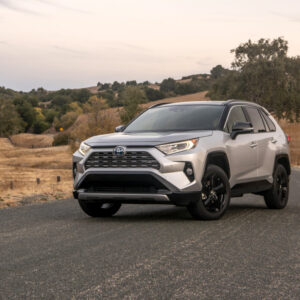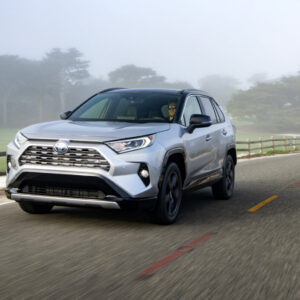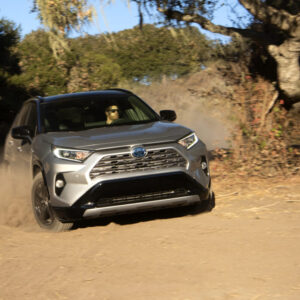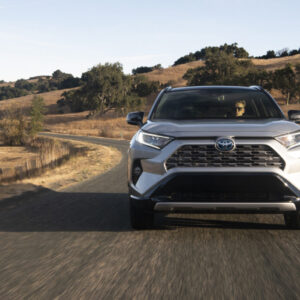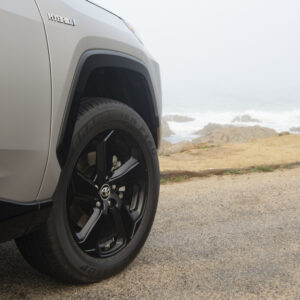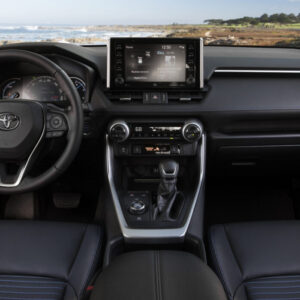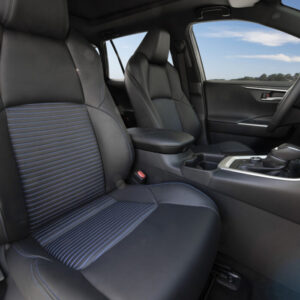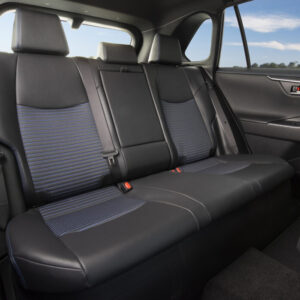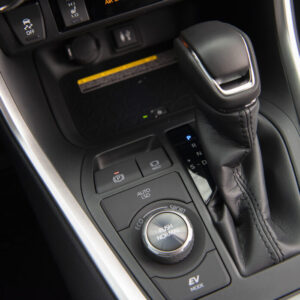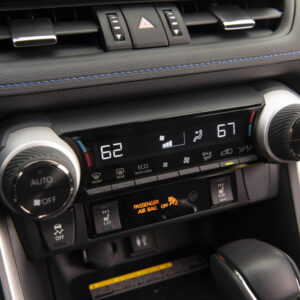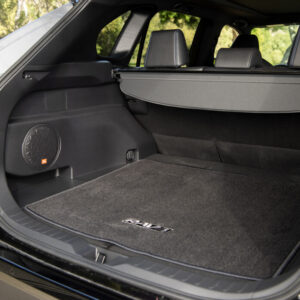I have to admit, I’ve never been a big fan of hybrids, but after spending a week with a 2020 Toyota RAV4 Hybrid, I’ve changed my mind. The gas version is decent, offering 203 hp, but it only provides 184 ft-lbs of torque at a high 5,000 rpm. In contrast, the RAV4 Hybrid delivers a combined 219 hp and 206 ft-lbs, giving you 13 more horsepower and 22 more lb-ft of torque than the gas engine. This results in a much better driving experience.
The RAV4 is the top-selling vehicle that isn’t a pickup truck in the US, and it’s easy to understand why. However, in 2020, it faces tougher competition, especially from the Honda CR-V, which now offers a hybrid model for the first time. The RAV4 was fully redesigned in 2019, providing more power, improved fuel efficiency, a tougher look (like a smaller 4Runner), and a better quality interior.
Gas companies will hate the RAV4’s 2.5-liter hybrid greater efficiency than its predecessor. We tried very hard to get worse than 40 mpg for the week and when doing some acceleration testing, finally got our average for the week to 38.1 mpg. It’s one of the few times we have never had to fill up a loan vehicle.
Technically the RAV4 hybrid is an all-wheel-drive vehicle, a ‘trail mode’ button in the center console activates a brake differential and different mapping for the Electronic Stability Control. You can see via the dash which wheels are providing traction and if needed would be useful navigating easy truck trails but not much more since it rides on standard road tires.
Driving
The RAV4 Hybrid gets down the road at a quick pace, I was pleasantly surprised and when we strapped on the test gear, we got from 0-60 in 7.2 seconds. Despite the small horsepower benefit over the gas model, thanks to the electric motors you can feel a real difference on the road. Power is delivered quicker, is available when you need it and it’s all very smooth. This makes merging onto the freeway or making a quick lane change much easier.
You have 3 drive modes to choose from Sport, Eco, and Normal which can be selected via a center console knob, and unlike many hybrids, the Eco and Sport modes influence performance. A separate Trail mode sends more power to the wheel that has the most traction, while an EV Mode provides electric-only operation for very short distances.
The XSE trim’s sport-tuned suspension handles the curves as well as can be expected for a tall crossover, the suspension is compliant and smooths out the bumps well. CVT transmissions are not my favorite and mated to the 2.5 liter inline 4, things can get quite noisy as you get to the top end of the rev range. Brakes are some of the best I’ve tested for a hybrid and pretty much most others too, the feel is good, and the bonus is they top up the battery whenever you step on them
On The Inside
The RAV4 Hybrid offers a distinctive cabin together with some quirky design details and a good mix of materials that are for the most part of high quality and provide a soft touch. The only let down are the hard and cheap feeling indicator and wiper stalks which feel like they came off a 1970 Pinto. For all the details and care that Toyota has put into this interior, this is a miss, but I would imagine most won’t notice it.
Onto the very good, the seats, the fronts are very comfortable and are covered in faux leather, or SofTex, as Toyota calls it. I have to say its hands down the best faux leather I’ve seen so far. What makes these so good is Toyota has used fabric for the backrests, which in hotter climates like here in San Diego, avoids that sweaty back issue, especially if cooled seats aren’t an option. The only complaint is the passenger seat doesn’t offer any height adjustment.
It’s roomy in the back with room to move in every direction, and the trunk offers a decent amount of space for this mid-size crossover segment. There are five USB ports around the cabin, and a big inductive charge pad, unfortunately, I still have an iPhone 6S so I can’t use it….well it still works great, don’t judge me.
Safety and Connectivity
My tester in XSE trim starts at $34,050 and has 18-inch black-painted wheels, a sport-tuned suspension, two-tone exterior paint, an 8-inch touch screen, dual-zone climate control, heated front seats, a power liftgate, and the faux simulated-leather upholstery. The Toyota Safety Sense 2.0 suite of driver aids is standard on all RAV4 Hybrids and includes forward-collision warning with automatic emergency braking, pedestrian detection, lane-departure alert with lane-keeping assist, auto high beams, road sign detection, adaptive cruise control, and hill-start assist.
My tester had a couple of options checked, some I would choose and others I would not. These included the Premium Audio option with an 11-speaker JBL system with a subwoofer, Dynamic Navigation with three years of free map updates, Dynamic POI Search, and Dynamic Voice Recognition. It also had the $640 Technology package that adds front and rear parking sensors, automatic rear cross-traffic braking, and wireless smartphone charging. Individual options include Wheel locks, Door Sill Protectors, and Blackout Emblem lays, which look cool.
In Summary
The hybrid powertrain is by far the one to choose and it makes the RAV4 stand out over all the competition, it has a stylish exterior and interior, peppy performance, incredible fuel economy and if you don’t go wild on the options, is very affordable. As a family-oriented car, it should meet most people’s needs and it comes with Toyotas famed reliability, I’m sold, I loved driving it for the week and I never thought I would say that.
2020 Toyota RAV4 Hybrid
BASE PRICE: $34,050
PRICE AS TESTED: $38,307
VEHICLE LAYOUT: Front engine, all wheel-drive, 5 passenger, 4-door SUV
ENGINE: DOHC 16-valve Atkinson-cycle 2.5-liter inline-4
ELECTRIC MOTOR: 3 AC motors (Depending on drive configuration)
COMBINED POWER: 219 hp
COMBINED TORQUE: 206 lb-ft
TRANSMISSION: Continuously variable automatic,
0-60 MPH: 7.2 seconds
CURB WEIGHT: 3,380 lb
CARGO VOLUME: 37.6 ft³, 69.8 ft³ with seat area
FUEL ECONOMY Combined/city/highway: 40/41/38 mpg
OUR OBSERVED: 38.1 mpg
PROS: Miserly fuel economy, peppy performance, impressive interior, smooth and silky ride quality
CONS: Buzzy gas engine, No passenger seat height adjustment
